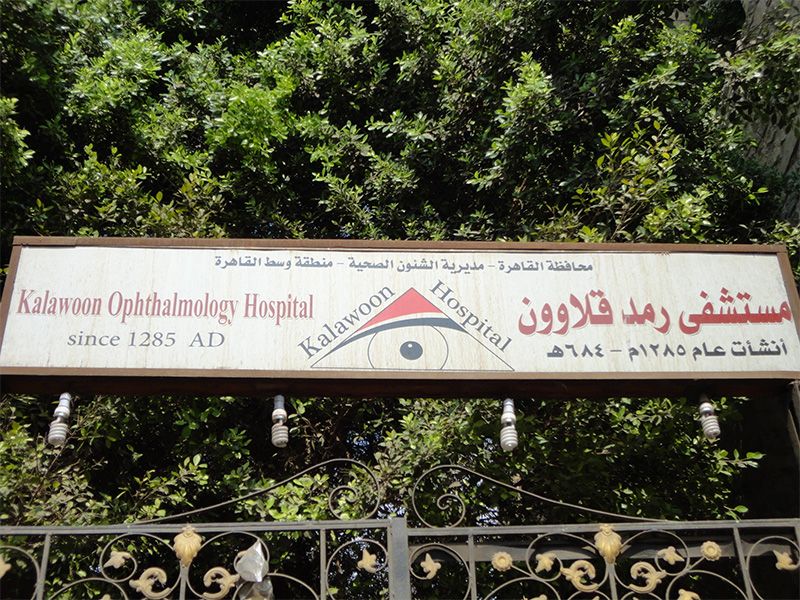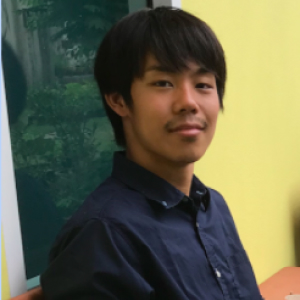The Later Years of Qalawun Hospital
The hospital at the Qalawun charitable endowment complex was the most important hospital of the Mamluk Sultanate throughout the Middle Ages. It was also a central hub for medical care in the Middle East and Islamic regions. This general hospital was comprised of four departments: internal medicine, ophthalmology, surgery, and orthopedics. It was so renowned that a visitor from Istanbul in the 17th century once wrote1, “the Hospital of Qalā’ūn in Egypt is famous among the Arabs and Persians and [among the people] in Anatolia…. we have not seen such a magnificent building for a hospital in all the countries to which we have traveled.” Al‐Nuwayrī (died 1332), who served as a trustee for the Qalawun complex1, relates that people who were sick but remained at home, whether they were rich or poor, would receive proper treatment. An Egyptian historian al-Maqrīzī (died 1442), referring to such treatment as the one al-Nuwayrī described, additionally explains that there was no limit to the number of people to be treated or the length of their stay in the hospital. 2 The hospital’s services were a familiar part of life for Muslims.
1 Dols, 1992: 123–24.
2Nuwayrī was a bureaucrat who acted as trustee of the Qalawun complex during the second reign of Nasir Muhammad (r. 1299–1309). He later became known for authoring the 33-volume encyclopedia The Ultimate Ambition in the Arts of Erudition (Muqaffā, 1:521–22).
3Nihāyat, 31: 108; Khiṭaṭ, 4: 696.
Surprisingly, the same hospital in the same location still provides medical services today. However, it is now run as an ophthalmology clinic, providing both inpatient and outpatient services, under the name “Kalawoon Ophthalmology Hospital”. Given this continuity, the Qalawun hospital has been healing people for many centuries, from its establishment in the 13th century, into today’s 21st century. No other hospital in the history of Islam has continuously provided medical care for so long.
But this raises a question. How and why did this general hospital come to specialize in ophthalmology? To find out, we will need to look at some history.

©Qalawun VR Project
In 1798, French troops under the command of General Napoleon Bonaparte landed in Egypt, and later entered Cairo after winning the Battle of the Pyramids. Discussions of Napoleon’s expedition to Egypt tend to underscore the military occupation aspects. But in fact, many scientists accompanied the campaign and conducted on-site investigations there. The knowledge they obtained was later compiled and published as “Description de l’Égypte”, which included a report on the Qalawun hospital. According to that report, the hospital at that time did not provide beds or even bedding for sick patients, and men with mental illnesses were restrained with chains around their necks. Some patients were said to have been left alone for as long as three years. 4
4 Description de l’Egypte, 18: 322–23.
After the withdrawal of the French army, Muhammad Ali Pasha, the Ottoman governor of Egypt, who is considered the father of modern Egypt (reigned 1805–49), implemented reforms to Egypt’s medical system. Nevertheless, the medical facilities at Qalawun hospital remained sub-standard. By the mid-19th century, the sick are said to have avoided Qalawun hospital, leaving only the mentally ill to occupy it.5 Under Muhammad Ali’s grandson Isma’il Pasha (reigned as Egyptian Viceroy (Khedive) 1867-79), the reforms to the medical system finally reached Qalawun hospital. The mentally ill patients confined there were transferred to a newly established mental hospital in the Abbasiyah district. With no patients at Qalawun hospital, all the patient rooms were rented out to merchants until around 1880. From then, physician Ḥusayn ‘Awf (d. 1883), who had previously worked at Egypt’s first modern hospital, Qasr El Eyni, accepted an invitation to oversee medical treatments at Qalawun hospital.6 He had majored in modern ophthalmology and had studied abroad in Austria.7 With his outstanding knowledge of ophthalmology, Ḥusayn established a specialized ophthalmic practice at Qalawun hospital. Similarly, Ḥusayn’s son Muḥammad, a physician who had traveled to France, assisted and eventually succeeded his father in rebuilding the hospital.8
5 ‘Īsā, 1981: 110.
6 Bitānūnī & Aḥmad Bitānūnī, 2008: 187; ‘Īsā, 1981: 111.
7 Bitānūnī & Aḥmad Bitānūnī, 2008: 186-87; ‘Īsā, 1981: 169.
8 Bitānūnī & Aḥmad Bitānūnī, 2008: 187; ‘Īsā, 1981: 169–170.
Some time later, the Comité de Conservation des Monuments de l’Art Arabe, headed by the German architect and historian Max Hertz (died 1919) met to discuss future plans to preserve charitable endowment buildings. Their recommendation was to build a new wing at Qalawun complex. Construction began in 1912 at a cost of 9,000 Egyptian pounds. 9
9 ‘Īsā, 1981: 167; Herz, 1919: 45–46.
In 1915, the sick ward at the new wing began offering medical treatments, and the Qalawun hospital was reborn as an eye clinic. Over its long history, from the 13th century to the present day, Qalawun hospital didn’t always provide the same high quality medical services as when it was founded. Nevertheless, the hospital never ceased supporting the Muslim community. In the Modern era, justifications were given for investing such large sums of money and exceptional human resources in the complex’s reconstruction. One reason was the understanding that supervising medical facilities fell under the state’s purview as a form of societal welfare. Another was likely Qalawun hospital’s unshakeable standing as a medical treatment center in the Middle Eastern/Islamic world. Nowadays, many people come to the eye clinic seeking treatment. They glance at the remnants of the ancient Qalawun hospital as they make their way into the new wing outfitted with modern medical equipment.

©Qalawun VR Project
References
Primary Sources
Description de l’Egypte: Description de l’Egypte ou recueil des observations et des recherches qui ont été faites en Egypte pendant l’expédition de l’armée française, dédiée au roi. 1821–30. Publiée par C.L.F. Panckoucke. 24 vols. Paris: Imprimerie de C. L. F. Panckoucke (https://gallica.bnf.fr/ark:/12148/bpt6k28016p/f329.item.r=hopital [Last accessed May 5, 2020])
Khiṭaṭ: al-Maqrīzī, Taqī al-Dīn Aḥmad ibn ʿAlī ibn ʿAbd al-Qādir. 2002–04. al-Mawāʿiẓ wal-Iʿtibār fī Dhikr al-Khiṭaṭ wal-Āthār. 4 vols. London: al-Furqān Islamic Heritage Foundation.
Muqaffā: al-Maqrīzī, Taqī al-Dīn Aḥmad ibn ʿAlī ibn ʿAbd al-Qādir. 1991. Kitāb al-Muqaffā al-Kabīr. 8 vols. Beirut: Dār al-Gharb al-Islāmī.
Nihāyat: al-Nuwayrī, Aḥmad ibn ʿAbd al-Wahhāb. 1923–55 (vol. 1–18); 1975–92 (vol. 19–31). Nihāyat al-Arab fī Funūn al-Adab. 31 vols. Cairo: Maṭba‘at Dār al-Kutub al-Miṣrīya.
Secondary Sources
Bitānūnī, Ḥasan and Aḥmad Bitānūnī. 2008. Aṭibbā’ Miṣr ‘Abr al-‘Uṣūr al-Islāmīya. Cairo: Dār al-Ma‘ārif.
Dols, Michael. 1992. Majnūn: The Madman in Medieval Islamic Society. Edited by Immisch, Diana., Oxford: Clarendon Press.
‘Īsā, Aḥmad. 1981. Tārīkh al-Bīmāristānāt fīl-Islām. Second edition, Beirut: Dār al-Rā‘id al-‘Arabī. Herz, Max. 1919. Die Baugruppe des Sultāns Qalāūn in Kairo. Hamburg: L. Friederichsen & Co..
English translation: Jeff Gedert
